Caboose - ENTHUSIAST COLOR SERIES by Mike Schafer [Column_Printed Matter]
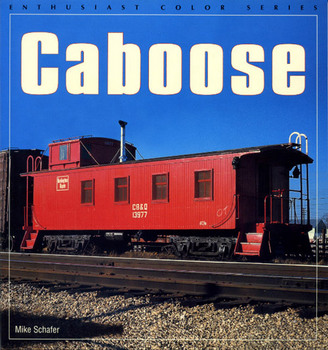 : cover
: coverAfter the demise of surface mail, we the Japanese have hard time in buying the heavy books. Yes, we have internet, though I think that the printed matter plays an important role in this hobby. Here I introduce the books I referred to make models to the Japanese who wish to share the importance and the joy.
"Caboose - ENTHUSIAST COLOR SERIES" by Mike Schafer, 96 pages, MBI Publishing Co., 1997
Mike gives an outline to caboose; its history, types, uses and some stories are represented using many color photos.
In this book, Rio Grande caboose #01500 is introduced in the "Red and Anything But" chapter.
Here are the contents;
07: Introduction
09: The Caboose and Its Evolution
33: Cabooses, Their Types and Uses
53: Life in the Caboose
65: Red and Anything But
81: The Caboose Falls From Grance
96: Epilogue
CABINS, CRUMMIES & HACKS by John Henderson and Henry Maywald [Column_Printed Matter]
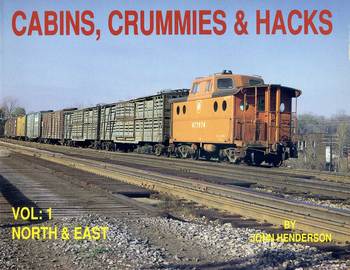
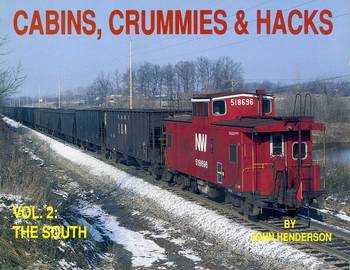
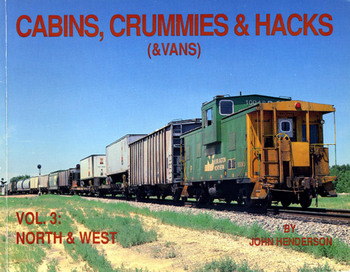
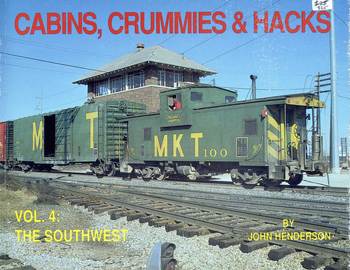
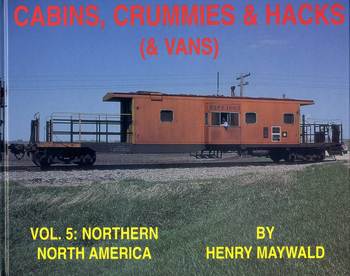 : cover
: cover"CABINS, CRUMMIES & HACKS VOL.1: NORTH & EAST" by John Henderson, 128 pages, H&M Productions, 1991
"CABINS, CRUMMIES & HACKS VOL.2: THE SOUTH" by John Henderson, 80 pages, H&M Productions, 1991
"CABINS, CRUMMIES & HACKS VOL.3: NORTH & WEST" by John Henderson, 80 pages, H&M Productions, 1992
"CABINS, CRUMMIES & HACKS VOL.4: THE SOUTHWEST" by John Henderson, 80 pages, H&M Productions, 1993
"CABINS, CRUMMIES & HACKS VOL.5: NORTHERN NORTH AMERICA" by Henry Maywald, 96 pages, H&M Productions, 1997
13 Rio Grande cabooses, including narrow gauge caboose, are represented in Vol. 3; #01434, 01476, 01401, 01451, 01393, 01448, 01167, 0540, 01480, 01489, 01500, 01511 and 01505.
In Vol. 5, 5 Rio Grande cabooses, #01507, 01453, 01475, 01476 and 01405 are captured.
Comparing the cabooses each railroad owned is fan; styles, colors, schemes, and accessories like markers and warning letterings show railroads' identities. Also interesting for me are the short introductions added to each railroads.
Here are the contents:
VOL. 1
Maine Central, Vermont Railway, Central Vermont, Lamoille Valley, Sanford & Eastern, Rutland, Bangor & Aroostook, Green Mountain, Boston & Maine, New York, New Haven & Hartford, Delaware & Hudson. Greenwich & Johnsonville, Napierville Junction, New York, Susquehanna & Western, Lehigh & Hudson River, Lehigh & New England, Erie-Delaware, Lackawanna & Western, Erie-Lackwanna, Lehigh Valley, Morristown & Erie, Cornwall, Staten Island Rapid Transit, Chestnut Ridge, Raritan River, Reading, Central Railroad of New Jersey, Long Island, Pennsylvania, Pennsylvania-Reading Seashore Lines, New York Central, Peoria & Eastern, Pittsburgh & Lake Erie, Chicago River & Indiana, Pittsburgh & Shawmut, Toronto Hamilton & Buffalo, Penn Central, West Virginia Northern, New York, Ontario & Western, Fonda, Johnstown & Gloversville, Nickel Plate, Union, Montour, Monongahela, Pittsburgh, Chartiers & Youghiogheny, Genesee & Wyoming, Ironton, Bessemer & Lake Erie, Wabash, Fairport, Painsville & Eastern, Youngstown & Northern, Weirton Steel, Youngstown & Southern, Akron, Barberton Belt, Akron, Canton & Youngstown, Lake Erie, Franklin & Clarion, Cambria & Indiana, Ann Arbor, Detroit, Toledo & Ironton, Louisville, New Albany & Corydon, Grand Trunk-Grand Trunk Western, Chicago & Eastern Illinois, Chicago & Illinois Midland, Chicago Short Line, Indiana Harbor Belt, Peoria & Pekin Union, Illinois Central, Chicago, South Shore & South Bend, Baltimore & Ohio, Bridleville Public Library, Western Maryland
VOL. 2
Alton &Southern, Apalachicola Northern, Asea Brown Boveri Traction, Atlanta & Saint Andrews Bay, Atlantic Coast Line, Auto Train, Buffalo Creek & Gauley, Cadiz Railroad, Central of Georgia, Chattahoochee Valley, Chesapeake & Ohio, Chessie System, Clinchfield, Columbus & Greenville, Durham & Southern, East Tennessee & Western North Carolina, Family Lines-Seaboard System, Fernwood Columbia & Gulf, Florida East Coast, Georgia Railroad, Gulf Mobile & Ohio, Illinois Central, Illinois Central Gulf, Interstate, Louisiana & North West, Louisville & Nashville, Manufacturers Railway, Meadow River, Meridian & Bigbee, Mississippi & Skuna Valley, Mississippian Railway, Monon, Norfolk & Western, North Louisiana & Gulf, Richmond Fredericksburg & Potomac, Saint Marys Railroad, Savannah & Atlanta, Seaboard Air Line, Seaboard Coast Line, Smoky Mountain, Southern Railway, Sumpter & Choctaw, Tennessee Alabama & Georgia, Tennessee Central, Tennessee Railroad, Terminal Railroad Association of St. Louis, Toledo Peoria & Western, Toledo Terminal, Trailer Train Industries, United States Army, United States Pipe & Foundry, Valdosta Southern, Virginian, Western Railway of Alabama, William R. Ritter Lumber Co., Winston-Salem Southbound
VOL. 3
Alaska Railroad, Algoma Central, Belt Railway of Chicago, British Columbia Hydro & Power Authority, Burlington Northern, Butte, Anaconda & Pacific, Canadian National, Canadian Pacific, Carbon County, Ceder Rapids & Iowa City, Chicago & North Western, Chicago Great Western, Chicago Short Line, Chicago, Burlington & Quincy, Chicago, Central & Pacific, Chicago, Milwaukee, St. Paul & Pacific, Chicago, Rock Island & Pacific, Chicago, West Pullman & Southern, Colorado & Southern, Colorado & wyoming, Columbia & Cowlitz, Consol Bathurst Paper Co., Denver & Rio Grande Western, Devco Railway, Duluth, Winnipeg & Pacific, Duluth, Missabe & Iron Range, Duluth, South Shore & Atlantic, Elgin, Joliet & Eastern, Essex Terminal, Fort Worth & Denver, Great Northern, Great Western, Grerater Winnipeg Water District, Green Bay & Western, Hutchnson & Northern, Kennecott Copper, Lake Superior & Ishpeming, Laona & Northern, Marinette, Tomahawk & Western, Metro. Sanitary Dist. of Greater Chicago, Minneapolis, Northfield & Southern, Minneapolis, St. Paul & Sault St. Marie, Mount Hood Railway, Northern Pacific, Ontario Northland, Pacific Great western, Quebec North Shore & Labrador, Spokane, Portland & Seattle, The Midland Railway Co. of Manitoba, Utah Railway, Valley & Siletz, Weyerhauser Lumber
VOL. 4
Ashley, Drew & Northern, Atchison, Topeka & Santa Fe, Central California Traction, Chihuahua Pacific, Coahula-Zacatecas A.G. Railway, De Queen & Eastern, Del Sureste Railway, Kansas City Southern, Kansas City Terminal, Louisiana & North West, Louisiana & Arkansas, Missouri Pacific, Missouri Pacific-C&EI, Missouri Pacific-T&P, Missouri-Kansas-Texas, National Railways of Mexico, Nevada Northern, Northeast Oklahoma, Pacific Railway, Roscoe, Snyder & Pacific, Sabine River & Northern, Sacramento Northern, San Diego & Arizona Eastern, Sierra Railway, Sonora-Baja California, Southern Pacific, St. Louis Southwestern, St. Louis-San Francisco, Texas & New Orleans, Texas & Pacific, Texas South-Eastern, The Texas Mexican, Trona, Union Pacific, United Railways of Yucatan, Western Pacific
VOL. 5
Ahnapee & Western, Akron, Canton & Youngstown, Algers, Winslow & Western, Alma & Jonquieres, Alton & Southern, Amtrak, Babcock & Wilcox Co., B&O Chicago Terminal Co., Baltimore & Ohio, Belt Railway Company of Cghicago, Boston & Maine, Burlington Northern, Butte, Anaconda & Pacific, Calumet & Hecla, Canadian American RR, Canadian National, Canadian Pacific, Canto Railroad, Carbon & Schuylkill, Cartier Railway, Ceder Rapids & Iowa City, Central Indiana, Central RR of New Jersey, Central Vermont, Chehalis Western, Chessie System, Chicago & Illinois Midland, Chicago & Western Indiana, Chicago, Central & Pacific, Chicago Great Western, Chicago, North Shore & Milwaukee, Chicago North Western, Chicago Short Line, Chicago, South Shore & South Bend, Clarendon & Pittsford, Conrail, CSX, Davenport, Rock Island & N. Western, Deleware & Hudson, Denver & Rio Grande Western, Department of Defense, Des Moines & Central Iowa, Detroit & Mackinac, Detroit Terminal Railroad, Duluth & North Eastern, Duluth, Missabe & Iron Range, Dupont, Elgin, Joliet & Eastern, Erie-Lackawanna, Escanaba & Lake Superior, Etna & Montrose, Ft. Douge, Des Moines & Southern, Ft. Worth & Denver, General Electric, Grafton & Upton, Grand Trunk Western, Great Northern, Great Western, Guilford, Huntingdon & Broad Top, Illinois Terminal, Indiana Harbor Belt, indiana Northern, Iowa Interstate, Lake Superior Terminal & Transfer, Lehigh Valley, London & port Stanley, Long Island Railroad, Maine Central, Maine Coast, Maryland Midland, McCloud River, Metro North Commuter Railroad, Midland Continental, Milwaukee Road, Minneapolis & St. Louis, Minneapolis, Northfield & Southern, Monongahela Railway, Napierville Junction, Newburgh & South Shore, New England Central, New Hope & Ivyland, New Jersey, Indiana & Illinois, New York, Susquehanna & Western, Northern Pacific, Ohio Central, Otter Tail Power Co., Pacific Great Eastern, Paducah & Louisville, Pennsylvania Railroad, Penn Central, Pittsburgh & Lake Erie, Pittsburgh & Shawmut, PL&W Railroad Inc., Port Huron & Detroit, Portland Terminal, Providence & Worcester, Quebec North Shore & Labrador, Rock Island Line, Sanford & Eastwrn, Soo Line, Spokane, Portland & seattle, Vermont Railway, Wabash, Washington Central, waterloo Railway, Wellsville, Addison & Galeton, Wiscondin & Calumet
Rio Grande Color Guide to Freight and Passenger Equipment by Jim Eager [Column_Printed Matter]
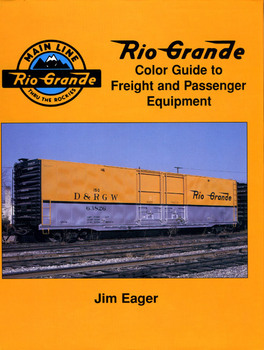 : cover
: cover"Rio Grande Color Guide to Freight and Passenger Equipment" by Jim Eager, 128 pages, Morning Sun Books, 1996
Though we have Fallen Flag site or Railroad Picture Archives site, MSCG would be a bible to us. Short but definite caption helps us deepen our knowledge for modeling. This Rio Grande version is relatively well balanced on the selection of equipment; most of the series of cars can be found.
Here are the contents;
006: The Zephyr's Budd Cars
013: Pullman & Other Lightweight Cars
021: Heavyweight Passenger Cars
028: Business Cars
032: Steam Generator Cars
034: 40' Boxcars
039: 50' Boxcars
045: 60' Boxcars
047: 80' Boxcars
049: Insulated RBL Boxcars
056: Stock Cars
058: Flat Cars & Bulkhead Flats
062: TOFC Equipment
066: Auto Racks
069: 65' Mill Gondolas
072: 52' mill Gondolas
076: Drop-Bottom Gondolas
078: Rotary-Dump Coal Gondolas
079: Coal Hoppers
083: Ballast Hoppers
085: 2-Bay Covered Hoppers
088: 3 & 4-Bay Covered Hoppers
093: Airslide Covered Hoppers
094: Tank Cars
095: Cabooses
102: Non-Revenue Equipment
109: Outfit Cars
112: Derricks, Cranes & Wreckers
117: Plows, Spreaders & Flangers
121: Miscellaneous Equipment
123: Narrow Gauge Equipment
DENVER & RIO GRANDE WESTERN by Pentrex [Column_Printed Matter]
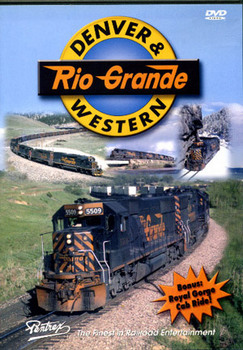 : cover
: cover"DENVER & RIO GRANDE WESTERN", Pentrex, 1 hour 52 minutes, 2004
This DVD covers both Moffat Tunnel route from Denver and Tennessee Pass route from Pueblo to Salt Lake City. It was shot in 1986 when Rio Grande was still independent and trains had caboose and manned helpers.
I watched several Rio Grande oriented DVDs, but I think this DVD is the best; picture is crisp, sound is deep and sunlight is dramatic. My favorites are: eastbound unit coal train passing the crossing in snow, and the eastbound train leaving Bond in the oblique sunlight.
We can find the flashing yellow signal I mentioned in the other page during the cab ride through the Royal Gorge.
Here are the contents;
01: Introduction
02: Denver to Plain
03: Plain to east Portal
04: Winter Park to Bond
05: Bond to Glenwood Springs
06: Glenwood to Minturn
07: Minturn to Pueblo
08: Denver to Pueblo
09: Denver to Winter Park ( The Ski Train)
10: Salt Lake City to Grand Jct.
Bonus Material: Royal Gorge Cab Ride
You can see the entire movie here on Youtube.
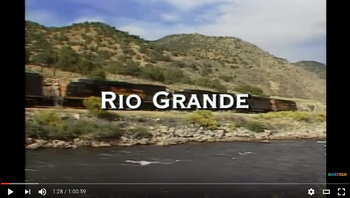
THE MODEL RAILROADER'S GUIDE TO COAL RAILROADING by Tony Koester [Column_Printed Matter]
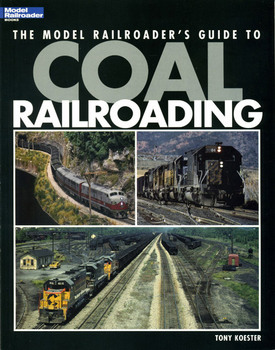 : cover
: cover"THE MODEL RAILROADER'S GUIDE TO COAL RAILROADING" by Tony Koester, 96 pages, Kalmbach, 2006
As you can see Rio Grande train on cover, Rio Grande was a "Coal Railroad". Accordingly, to know about the industry helps me modeling Rio Grande. "Coal in the West" pages are mostly dedicated to Rio Grande and Utah Railway.
Also was that I was living near the Appalachians in the '70s, photos of company towns in the Appalachians are the "Deja Vu"s and recalls me of those days.
Here are the contents;
004: Introduction
006: "Tide 470" by David P. Morgan
013: Where's coal?
020: Company towns
030: The central Appalachians
048: The anthracite region
056: Coalfields in the cornfierlds
064: Coal in the west
072: Black-diamond destinations
080: Big power for heavy trains
090: Modeling coal railroad operations
THE SECOND DIESEL SPOTTER'S GUIDE by Jerry A. Pinkepank [Column_Printed Matter]
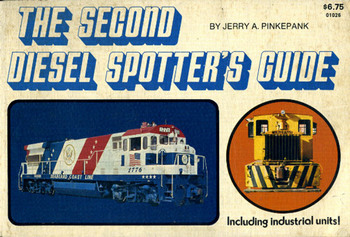 : cover
: cover"THE SECOND DIESEL SPOTTER'S GUIDE" by Jerry A. Pinkepank, 459 pages, Kalmbach Publishing, 1973
This book was and is the bible for me identifying the locomotives found in my archive photos.
I ordinary read the number of the locomotive in the photo and see roster on web or book. But sometimes I can't find out the kind of locomotive, especially SOU: they seem to had renumbering several times and are complicated. Then, this guide comes in.
The "Miscellaneous Builders" pages are also my points nowadays.
Here are the contents;
004: Preface
006: Typical Alco Road Switcher
007: Interior of EMD F3 Cab Unit
008: Diesel Wheel Arrangements
010: Diesel Trucks
021: The Hazards of Diesel Spotting
025: EMD
137: GE
207: Alco
281: BLW
323: FM
347: Lima
355: MISC
433: Repowered Locomotives
VANISHING POINT by Richard C. Sarafian [Column_Printed Matter]
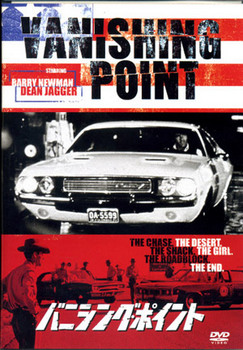 : package
: package"VANISHING POINT", Twentieth Century Fox, 99 minutes, 1971
Directed by Richard C. Sarafian
Story by Malcolm Hart
Starring Barry Newman
We can find Rio Grande trains in movies. This movie went on location in summer 1970 at Denver, Rifle and Cisco, tracing the Rio Grande main. Here we can see Rio Grande activities accompanied by CB&Q in the '70s. The scenery, like barren of Utah in this movie is also superb.
List of the scene with trains;
0:08:45-47 Rio Grande train with 100t hoppers and a caboose
0:09:35-40 CB&Q (BN?) switcher with NP baggage car at Denver
0:23:10-20 station and town of Rifle
1:34:35-40 Rio Grande train with RI and CN auto-lacks passing through Cisco
1:37:24-40 Rio Grande train with SD45s and GP40s passing through Cisco
1:37:45-50 Rio Grande 40 feet boxcar parked at Cisco
Mar 2010 issue Trains [Column_Printed Matter]
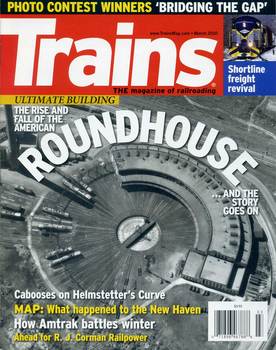
The March 2010 issue of Trains magazine featured the roundhouse.
In the column on page 29, it is written that the roundhouse in Knoxville TN is still in use as an engine repair shop. We can confirm it by the Google map.
I was surprised and pleased at the fact because the roundhouse was abandoned and vacant in 1970 when I visited there. I can't recollect whether the turntable was left intact, but the rails were all gone and weeds covered the inside of the circle at that time.
Though I don't know how and why it is revived, I think it's much better than preserved as a restaurant or like that. I think that the industrial heritage would prove itself a heritage in the industry it belongs. But the most important is the existence of the object. We missed a lot here in Japan.
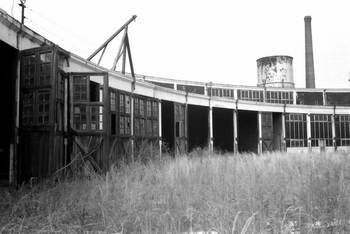 : Knoxville TN, winter 1970
: Knoxville TN, winter 1970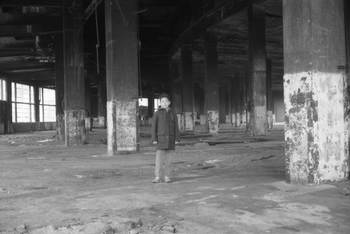 : Knoxville TN, winter 1970
: Knoxville TN, winter 1970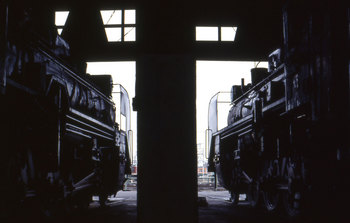 : Kyoto Japan, Sep. 8, 1993
: Kyoto Japan, Sep. 8, 1993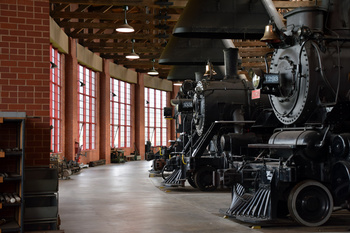 : Sugarcreek. OH. Sep. 7, 2019
: Sugarcreek. OH. Sep. 7, 2019Rio Grande Diesels - A PICTORIAL HISTORY VOL.1, 2 and 3 by Joseph Strapac [Column_Printed Matter]
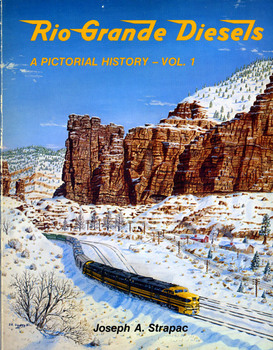
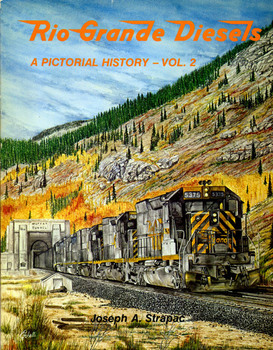
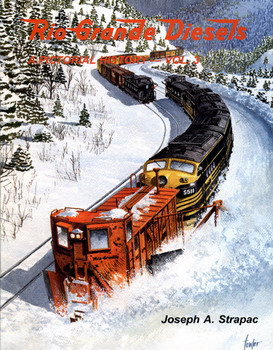 : covers
: covers"Rio Grande Diesels - A PICTORIAL HISTORY VOL.1" by Joseph Strapac, 112 pages, Shade Tree Books, 1983
"Rio Grande Diesels - A PICTORIAL HISTORY VOL.2" by Joseph Strapac, 112 pages, Shade Tree Books, 1984
"Rio Grande Diesels - A PICTORIAL HISTORY VOL.3" by Joseph Strapac, 112 pages, Shade Tree Books, 1998
These books represent Rio Grande diesel locomotives from GE 44-tonners to GP60s. Assorted are Cabooses, passenger cars, and MOW equipment in Vol. 3.
Strapac describes in detail using plenty of photos, such as the difference between GP40s #3051-3063 and #3064-3068, or the difference between GP40-2s #3129-3130 and the others: these catch our points.
Table of contents would help to suppose the whole.
Vol.1
003: The Grande Environment
014: Early Switchers, 1941 - 1948
032: Early Roadswitchers
040: Alco Passenger Power
050: EMD Passenger F-Units
068: First Freight Power: EMD FT's
084: The EMD F5 and F7 Freight Units
Vol. 2
003: Introduction
022: Last Days of the Zephyr
028: Second-Generation Switchers
034: GP7 and GP9
048: SD7 and SD9
056: The Hydros
062: First Replacement Units: GP30 and GP35
074: GP40 and GP40-2
092: Coal Train Power: SD45 and SD40T-2
Vol. 3
003: Rio Grande in the Diesel Era
007: Steel Cabooses
029: Streamstyled Passenger Cars
037: Non-Zephyr Lightweight Cars
053: Renewing the Ski Train
061: Clearing Wrecks and Fighting Snow
071: East to Kansas
079: Former Conrail GP40s
087: The SD50s
095: The Last GP Units
101: Closing Out the Roster
Strapac was appeared in Mar. 15, 2010, Trains News Wire;
THE PROSPECTOR [Column_Printed Matter]
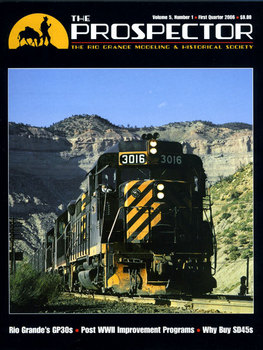
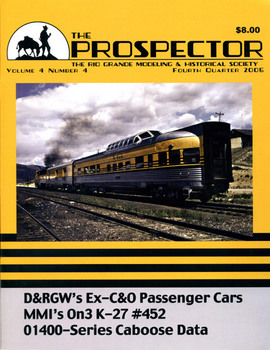 : covers
: covers"THE PROSPECTOR" by The Rio Grande Modeling & Historical Society.
Of course, every page of this magazine is dedicated to Rio Grande. In The 1st Quarter 2006 issue, GP30s and SD45s fill the pages. The 4th Quarter 2006 issue features #01400 series cabooses. Relatively large photos make us happy looking the details.
Sep/Oct 2005 issue N SCALE RAILROADING [Column_Printed Matter]
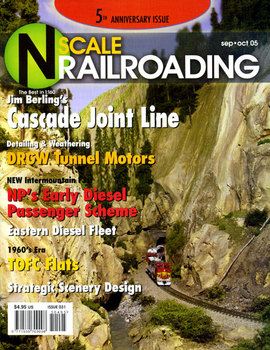 : cover
: cover"N SCALE RAILROADING" by North American N Scale Publishing.
This issue has an articles on Rio Grande SD40T-2 by Mike Danneman on page 26 to 31.Mike represents his art of weathering on N scale models.
Also the layout focused on Royal Gorge route by Rob Carey represented on page 54 to 57 might be interesting for Rio Grande fans.
Feb. 2005 issue MODEL RAILROADING [Column_Printed Matter]
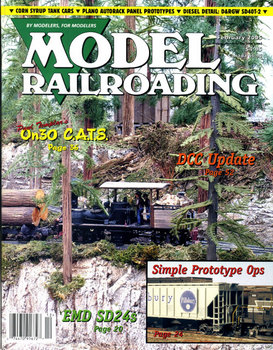 : cover
: cover"MODEL RAILROADING" by Highlands Station LLC.
This issue has the articles "Diesel Detail Close-up, D&RGW SD40T-2" on page 48 to 51. Rich Picariello represents every surface detail on the locomotive assorted with HO and N scale available parts list.
Articles on Southern Railway's SD24 on page 20 to 23 is my another favorite.
Unfortunately, the magazine is gone, also gone is the parts supplier, Sunrise Enterprises.
Last of a Breed by Mike Danneman [Column_Printed Matter]
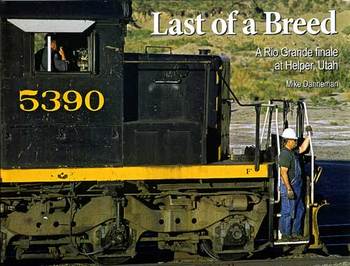 : cover
: cover"Last of a Breed" by Mike Danneman, 240 pages, 2 Ponies Publishing, 2009
Mike, who we know as a superb N scale modeler modeling the Rio Grande brought this significant book representing the last of fleet painted in aspen gold. Mike politely covers not only equipment but the people who ran the Rio Grande. The up closed photos of the tunnel motors may also swell the volition of us, the modelers.
Here are the contents;
007: Foreword
008: The town named for the railroad
020: What is a Dirt Train?
038: Monday morning at the depot
052: Sunrise at mounds
060: Mel's engines
076: Desert running
096: Last of a breed
116: Gang of Four
128: Lunchtime at East Carbon
144: Side stop at Sutro
160: On the ground
170: Helper helper
188: Cutting into ranks
206: The last survivor
222: Coming home
Rio Grande in color Volume 5: Second Generation Diesels by Timothy Morris [Column_Printed Matter]
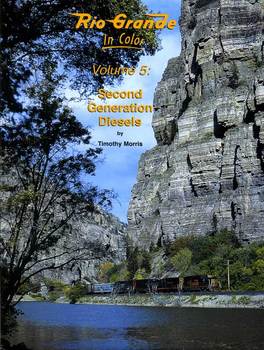 : cover
: cover"Rio Grande in color Volume 5: Second Generation Diesels" by Timothy Morris, 128 pages, Morning Sun Books, 2010
Many kinds of visual points can be considered to introduce a railroad. I think that's why each of us can hold one's exclusive image to a railroad. So, I think the book which has a contrivance of providing plural visual points leads us to the exclusive images.
This book shows the photos of Rio Grande fleet in decade by decade. Thus, we can see the change during the use. The change of freight cars they pull is also interesting.
Differ from the Vol. 3, this Vol. 5 book has rich pages for '60s to '80s.
Here are the contents;
003: Introduction
006: 1960-1969
023: The 1970's - Big Changes for the Railroad Industry
054: The 1980's - Troubled Years Ending in Merger
092: Rio Grande Zephyr
126: The Ski Train
128: The Hind End
TWO-LANE BLACKTOP by Monte Hellman [Column_Printed Matter]
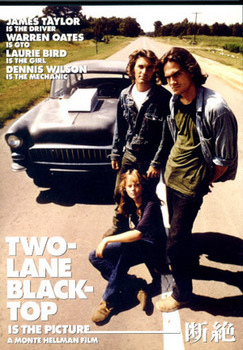 : package
: package"TWO-LANE BLACKTOP", Universal, 102 minutes, 1971
Directed by Monte Hellman
Story by Will Corry
Starring James Taylor, Dennis Wilson, Warren Oates
This is the one of the three "road movies" I mentioned before. The others are "EASY RIDER" and "VANISHING POINT".
In this movie, we can find ATSF freight train running in the background. We can also see the scenery of the West and the South in the early '70s. Like the other movies, trains are always in the backgrounds as a scenery.
As you know, this region was built along these railroads destined for the Frontier, which not recognized in ordinary today. I think railroads as a background scenery represents the position of the railroads in the natural features of the region, backbones under the skin and flesh.
We all know the existence of the bone. But the bone breaking through the skin would bring serious astonishment. So, the bones are usually buried in the unconsciousness. So the railroads as bones are buried in the scenery. It is the "das Ding(by Freud)" of the United States.
Rio Grande In Color Volume 3 by James Sandrin [Column_Printed Matter]
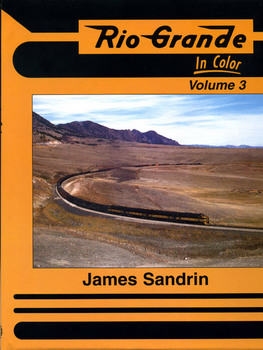 : cover
: cover"Rio Grande In Color Volume 3" by James Sandrin, 128 pages, Morning Sun Books, 2001
This book introduces the history of Rio Grande's "Transition Years" by lining the photos year by year. It does cover from the steam trains of 1947 to SD50s of 1984. But the main content is the train pulled by steam and wagon top diesel locomotives.
Here are the contents;
006: 1947 Rio Grande
007: 1949
036: 1951
038: 1952
040: 1953
044: 1954
045: 1955
048: 1956
052: 1957
054: 1958
058: 1959
060: 1960
061: 1961
064: 1962
070: 1963
071: 1964
076: 1965
086: 1966
090: 1967
097: 1968
106: 1969
111: 1970
114: 1971
117: 1972
119: 1973
120: 1974
121: 1975
124: 1974
127: 1980s
I'm interested in pictures represent last minutes of Aspen Branch.
Rio Grande Secret Places Volume 1 and 2 by R.C. Farewell [Column_Printed Matter]
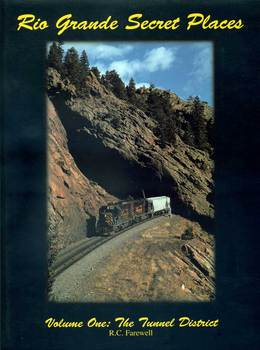
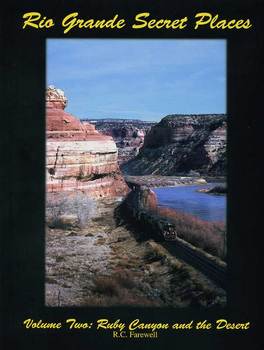 ; cover
; cover"Rio Grande Secret Places Volume 1" by R.C. Farewell, 160 pages, Colorado Railroad Museum, 1997
"Rio Grande Secret Places Volume 2" by R.C. Farewell, 206 pages, Colorado Railroad Museum, 1999
Vol. 1 geographically follows the Moffat Tunnel route in Colorado. Every tunnels, from 1 to 30, are represented one by one. It also covers sidings and bridges along the route. Most of the photos seems mostly taken in the 90's.
Vol. 2 geographically follows the Rio Grande mainline mainly in Utah. A station-to-station chapters represent not only its nature but the history of the Frontier. It covers from Grand Junction to Helper, including Cane Creek Branch. The photos seems mostly taken in the 90's.
Here are the contents;
VOL. 1
010: Tunnel District Overview
046-156: Tunnel One - Tunnel Thirty
158: Index
VOL. 2
008: Introduction
014: Ruby Canyon
062: The Eastern Desert
136: The Western Desert
188: Cane Creek Blanch
Here, I have a book which has a similar concept. It is interesting that both books try to represent the mountainous mainline.
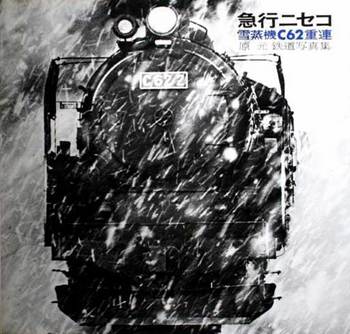 : cover of the book "Express Niseko" by Haramoto, introducing the mountainous mainline of JNR in Hokkaido, Japan
: cover of the book "Express Niseko" by Haramoto, introducing the mountainous mainline of JNR in Hokkaido, JapanSYSTEM TIME-TABLE (D&RGW Employee Time Table) [Column_Printed Matter]
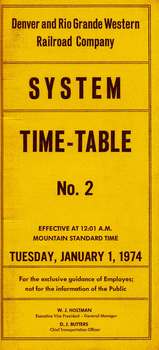 : cover of ETT
: cover of ETT"SYSTEM TIME-TABLE No. 2", 55 pages, 1974
This is the employee time table of Rio Grande.
As usual, we can find the train schedule. Here, the Rio Grande dispatches 12 westward trains and 6 trains eastward west of Grand Junction. Eastward trains might run in sections, one bound for Denver and the other for Pueblo. That makes the formula.
Most of the eastward trains stop at Grand Junction about an hour and a half. They might have some switchings and/or adding at the yard. Contrary, most of the westward trains only have brief stops.
Here, I made a diagram from the train schedule.
We can find that the westward and eastward trains tend to run in "elephant style", east of Grand Junction. I don't know why but thanks to the schedule, I could catch 3 trains in an hour (and I missed the Zephyr!) around Glenwood Canyon in the afternoon of 1971.
The train I caught around Glenwood Canyon;
http://riogrande.blog.so-net.ne.jp/2010-02-09-5
http://riogrande.blog.so-net.ne.jp/2010-02-09-6
http://riogrande.blog.so-net.ne.jp/2010-02-09-7
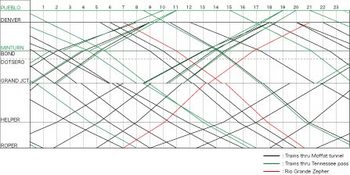 : diagram made from the time table
: diagram made from the time tableBy the way, on the pages instructing mileages and stations along the line, there are some symbols next to the name of stations, like "MINTURN DBFKRSWY".
These symbols indicate;
B: Bulletins and circulars
D: Day train order office
DN: Day and night train order office
F: Fuel Station
J: Junction Point
K: Standard clock
N: Night train order office
O: Track Scales
P: Telephone
R: Wayside radio station
S: Sand
T: Turntable
W: Water station
Y: Wye
Besides these, some stations have these items for emergency use.
・Car Skids
・Rerailing Frogs
・Slewing Cables
It resembles to Michelin Guide. 3-star stations maybe the "worth the journey" stations for us, the fan. But the "J" station would be the station which attracts the crews best. It is said that "THE POINT IS NOT WHERE YOU WORK - IT'S HOW YOU WORK".
 : page 20-21 of the time-table
: page 20-21 of the time-tableRULES & REGULATIONS of the Operating Department [Column_Printed Matter]
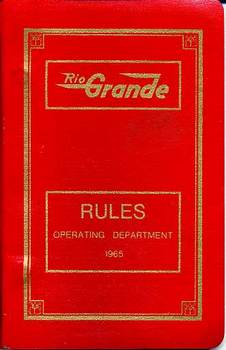 : Cover
: Cover"RULES & REGULATIONS of the Operating Department", 146 pages, issued in 1965, last revised in Feb. 1972
This is the rulebook of Rio Grande. From this book, I got the information for the symbols on Employee Time Table and the difference of meanings between "X" and "AX" on MOW equipment.
The contents are;
005: GENERAL RULES
007: DEFINITIONS
012: OPERATING RULES
013: STANDARD TIME
014: TIME-TABLES
016: SIGNALS
024: TRAIN SIGNALS
027: USE OF SIGNALS
028: SUPERIORITY OF SIGNALS
028: MOVEMENT OF TRAINS
043: RULES FOR MOVEMENT BY TRAIN ORDER
054: FORM OF TRAIN ORDERS
071: SIGNALS
073: INDICATION
077: AUTOMATIC BLOCK SYSTEM RULES
081: CENTRALIZED TRAFFIC CONTROL RULES
086: DUAL CONTROLLED SWITCHES
088: SPRING SWITCHES
089: ELECTRIC SWITCH LOCKS
091: INTERLOCKING
096: ADDITIONAL GENERAL RULES
104: ACCIDENTS, ILLNESS, INJURIES, DEATHS
109: TRAIN AND YARD SERVICE
109: Conductors
109: Passenger Conductors
112: Freight Conductors
113: Trainmen
113: Passenger Trainmen
115: Freight Trainmen
116: Yardmasters
117: Enginemen
122: Pilot
122: STATION SERVICE
128: TRAIN DISPATCHERS AND OPERATORS
130: TRACK CARS, MAINTENANCE OF WAY WORK AND EQUIPMENT
134: RAILROAD COMMUNICATION SYSTEM
After all, from the viewpoint of railfanning, the chapter for signals would be most interesting.
But, I'm also attracted on RULE J "must be neat in appearance" on page 6. What a fashionable word!
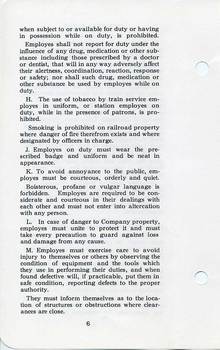 : page 6 of the rulebook
: page 6 of the rulebookYou can see all the pages of this rulebook here (page numbers I wrote above would be helpful to find your interested pages);
Hearing the passing away of Stein [Column_Printed Matter]
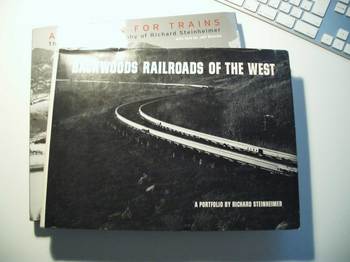
I read the passing away of Richard Steinheimer on Trains News Wire. I think he was not only “Dean of western railway photographers” but was the Dean of world railway photographers. For instance, I read somewhere Japanese photographer Naotaka Hirota mentioning about his influence.
Me too, was attached to and influenced by his photographs appeared on Trains magazine.
The air, or space (how should I say?) appeared in his photo recalls the days I spent in the United States.
I think that the object, like front glass window frame of his car, engine house door, platform columns and trainmen treated equal, or sometimes promoted to trains, makes the air and creates his world.
These objects are the “Parergon” , something that is an accessory to a main work or subject, of railway photographs. Jacques Derrida explains that Parergon is indeed an accessory, but it’s something that we have to accept. Thus, I think that Stein was the first railway photographer who succeeded in accepting it.
The cover photo of his early work “BACKWOODS RAILROADS OF THE WEST” printed in 1963 represents this fact. There is not a train but only “The 3-foot-gauge rails of the Denver & Rio Grande Western twist and turn on their eastward climb to Cumbres Pass in the fading light of the afternoon sun in the Rocky Mountains”. Of course, Rails are the one of Parergon in railway photography.
Trains NEWS WIRE (subscriber only content);
http://trn.trains.com/Railroad%20News/News%20Wire/2011/05/Steinheimer.aspx
General Traffic Department Circular [Column_Printed Matter]
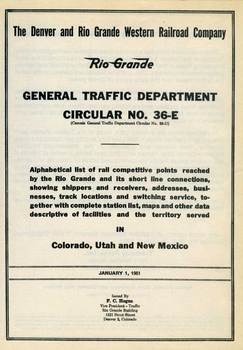 : front page
: front page“RIO GRANDE FREIGHT TRAFFIC GUIDE” by Tramway Press, 99 pages, 1983
This is a reprint of the Shipper Guide/Directory issued by Rio Grande.
According to the Rio Grande rulebook, letter “B” following the name of station in the timetable indicates that the station keeps “Bulletins and circulars”. I’m not sure whether this “Circular” is included in this “Bulletins and circulars”, but the content of this booklet which is an exact reprint of the “General Traffic Department Circular No. 36-E” printed in 1951 has great information.
The content includes:
1. List of rail competitive points reached by the Rio Grande and its short line connections showing shippers and receivers, addresses, businesses, track locations and switching service.
2. Alphabetical index of all Rio Grande stations
3. Map of Denver and Rio Grande Western Railroad
4. Map of Colorado lines
5. Diagram of Denver-Pueblo double track, showing distances between depots
6. Map of terminal train yard, North Yard (Denver)
7. Photograph of North Yard (Denver)
8. Map of railroad and market facilities, Denver, Colo.
9. Photograph of Wazee Market, Denver, Colo.
10. Map of terminals, Pueblo, Colo.
11. Photograph of terminals and interchange yard, Pueblo, Colo.
12. List of coal mines in Southern Colorado Field
13. Map of Walsenburg and Trinidad, Colo. Coal Fields
14. List of coal mines in Florence-Canon City, Colo. Field
15. Map of Florence-Canon City, Colo. Coal Field
16. List of coal mines in Routt and Moffat Counties, Yampa Coal Field, Colo.
17. Map of Routt and Moffat Counties, Yampa Coal Field, Colo.
18. Map of Utah lines
19. Photograph of outer train yard, Roper (Salt Lake City, Utah)
20. Map of terminals, Salt Lake City, Utah
21. Map of terminals, Ogden, Utah
22. List of coal mines in Utah Field
23. Map of Utah Coal Field
24. Freight equipment roster
25. Freight connections and junction points
26. Icing stations
27. Stock yard facilities (Alphabetical list of stations)
28. Location of track scales
29. Location of cranes and derricks
30. List of stations providing facilities for unloading automobiles, trucks and tractors
31. Condensed clearance table
32. Clearance table (Maximum load dimensions)
33. Rio Grande Motor Way, Inc., officers, freight traffic representatives and principal freight agencies, also points served
34. Map of Rio Grande Motor Way freight routes
35. Freight and passenger representatives
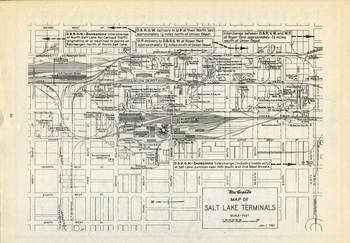 : 20. Map of terminals, Salt Lake City, Utah
: 20. Map of terminals, Salt Lake City, UtahRio Grande rulebook:
http://riogrande.blog.so-net.ne.jp/2010-12-13
Rio Grande ETT:
http://riogrande.blog.so-net.ne.jp/2010-11-15
2011-09-09 16:23
コメント(0)
Loads Rio Grande Carried [Column_Printed Matter]
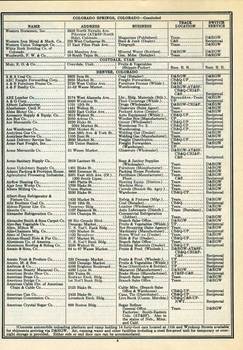 : from 1. list showing shippers and receivers, addresses, businesses, track locations and switching service
: from 1. list showing shippers and receivers, addresses, businesses, track locations and switching serviceFrom the List of rail competitive points illustrated in the General Traffic Department Circular, we can know all the loads the Rio Grande carried except bridge traffics.
Of course, coal, Coors beers, and Cookie Box cookies are listed.
Here, picking up some commodities which caught my eyes from the Denver list:
fruits, vegetables, beans, potatoes, onions, eggs, bananas, fish, meat, turkeys, honey, rice, flour, butter, cheese, salt, spices, dried milk, vinegar, beers, liquor, wine, coffee, ginger ale, coca-cola, potato chips, cereals, crackers, candies, chocolate products, popcorn, macaroni, tobacco, newspaper, magazines, pottery, stoves, ranges, vacuum cleaners, shoes, hats, ski’s, soap, radios, mattresses, furniture, safes, pianos, pipe organs, autos, batteries & tires, hides, building materials, lumbers, glass, marble, concrete, lime, sand & gravel, monuments, oil, paper, grain, livestock, animal food, seeds, wool, barrels, chemicals, coal, oil well supplies, scrap steel, pipe, explosives, waste paper, popcorn machines, bowling-billiard equipments and etc.
There are almost every daily necessities except real estate.
Adding to the commodities, names of well-known shippers and receivers are found in the list:
Borden, Dupont, Electrolux, Safeway, General Electric, Heinz, Hershey, Kellogg, Otis, J.C. Penny, Sears-Roebuck, Swift and etc.
For the core enthusiasts, I could point out:
Ajax Iron Works Co. (sorry, it was not Hand Brake Co. any relationship?), Fairbanks-Morse & Co. (scales?), Griffin Wheel Co. (railroad car wheels) and Mountain Region Supply Co. (railroad supplies).
The list represents the Rio Grande staffs’ and agents’ efforts on gathering the loads “in the era of the last of steam and the early years of diesel power”.
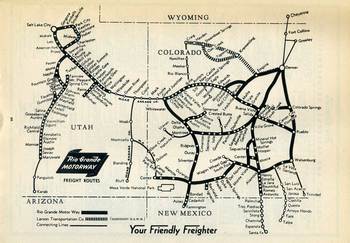 : 34. Map of Rio Grande Motor Way freight routes
: 34. Map of Rio Grande Motor Way freight routes2011-09-16 15:43
コメント(0)
Sep. 1966 issue The Official Guide [Column_Printed Matter]
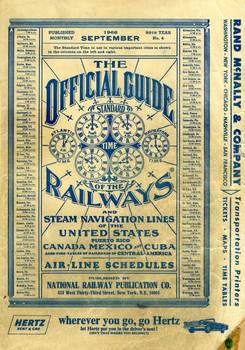 : cover
: cover"The Official Guide of the Railways" by National Railway Publication Co., 1052 pages, 1966
This printed matter may not be included in “Bulletins and circulars” which kept at “B” signed Rio Grande stations. But, it is easy to imagine this printed matter kept at the stations for passengers: The Official Guide.
This over 1000 pages Sep. 1966 issue "OG" or “OGR” contains train, air, bus and navigation line schedules accompanied with maps, list of officers and train equipment.
I won’t say “if”. But looking this OGR drives me dreaming of riding and/or watching trains: The book represents mixed trains, caboose rides, locals and steam-powered trains.
For example, Union Pacific provides:
a) Mixed trains between Columbus and Albion in Nebraska.
But, according to the “Explanations of signs”, the train runs about one-half hour later than schedule shown when livestock is carried.
b) Local freights between Ashton and Victor on Teton Valley Branch in Idaho.
According to the “Explanations of signs”, the train has “combination coach-baggage car”, a combine in the consist.
c) Local freights with caboose for passengers between Salt Lake City and Provo in Utah.
Timetable sold in Japan has information for “EKI-BEN”, which means box meal sold at stations, in the margin. Here, the OGR also has some information for the meal:
a) Santa Fe provides 45 minutes meal stop (Fred Harvey service?) at Barstow, CA for train No. 23 and 24 “The Grand Canyon”, connecting Chicago and Los Angeles. Wondering the menu for the “meal stop” passengers at Fred Harvey’s would be interesting.
b) Burlington also provides 32 minutes meal stop at Ottumwa, IA for train No.7 connecting Chicago and Omaha. Also is at Clearmont, WY for train No.20 and 21 connecting Kansa City and Billings.
c) Rock Island provides meal stop or box lunch at Tucumcari, NM, Sayre and El Reno, OK for train No.21 and 22 connecting Memphis and Los Angeles. “Consult trainman”.
d) Southern also provides box breakfasts/lunches/dinners at Chattanooga, Johnson City, Hickory, Salisbury, Batesburg, Monroe, Knoxville, Hendersonville, Danville, Anniston, and Bristol. “Notice to conductor”
e) Northern Pacific runs station restaurants at Fargo, Jamestown, Mandan, Glendive, Billings, Livingston, Butte, Helena, Missoula, Paradise, Spokane, Portland, Tacoma and Seattle along its “route of the vista-dome”.
On the last pages of the OGR, the list of National Parks is provided. It seems that visiting these parks was one of the major purposes of the rail trip at that time.
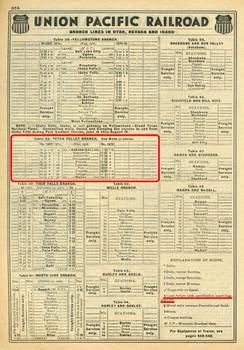 : page 564 of The Guide representing the use of combine on UP
: page 564 of The Guide representing the use of combine on UPWeb page representing UP combine model (Japanese only):
http://blog.livedoor.jp/dda40x/archives/51796789.html
2011-10-07 19:33
コメント(0)
Freight Cars Illustrated Vol. 9 Freight Car Appliances by Darrell Sawyer [Column_Printed Matter]
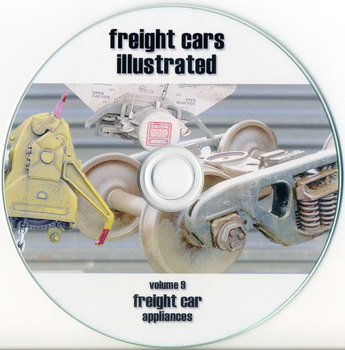 : the CD
: the CD"freight cars illustrated vol. 9 freight car appliances" by Darrell Sawyer, 902 pages, FCIX, 2007
This is a digital book over 300MB offered in .pdf format by Darrell Sawyer.
We have many books describing freight cars. Books like “The Model Railroader’s Guide to Freight Cars” by Jeff Wilson have columns illustrating car parts. But most of them are brief and not convincing from the enthusiasts’ point of view; they often not covering the all.
Here, I believe Darrell describes all.
The book illustrates freight car hand brakes, trucks, doors, outlet gates, ends and roofs using clear and large photos. The parts are introduced manufacturer to manufacturer. The brief story of the individual manufacturer added to each chapter was also interesting for me. Darrell collected the items between 1993 and 2007, but it roughly covers the items manufactured in the ‘50s to the ‘00s.
Here are the contents:
Part 1: Hand Brakes, 153 pages
Part 2: Trucks, 210 pages
Part 3: Doors, 186 pages
Part 4: Gates, 187 pages
Part 5: Ends, 109 pages
Part 6: Roofs, 57 pages
I referred to the book to survey the type of door on N scale model boxcar I have in my collection. I’ll show the results later on this blog. Darrell offers rich sample pages including index in his web site. The index may well tempt you. Try it.
Darrell’s web page;
http://www.fcix.info/
List of his e-books;
http://www.fcix.info/fcix.htm
2012-09-07 09:00
コメント(0)
DIRTY MARY, CRAZY LARRY by John Hough [Column_Printed Matter]
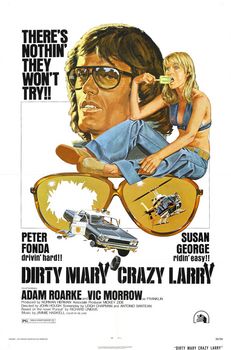
“Dirty Mary, Crazy Larry”, 20th Century Fox, 93 minutes, 1974
Directed by John Hough
Based on the novel "Pursuit" by Richard Unekis
Starring Peter Fonda, Susan George
Road movies and car action movies often go on location. That bring us landscapes of a period when "google street view" is nonexistent.
Here is another '70s car action movie starring trains recently reproduced in DVD. In the last scene, Peter Fonda rams into Stockton Terminal & Eastern Railroad’s Alco S1, #506.
506 worked for the railroad into the '80s and now preserved at the Western Pacific Railroad Museum in Portola, CA. The railroad also exists and is active today.
information for #506 by the museum, accompanying crash scene movie;
http://www.wplives.org/locomotivepages/wp506.html
Stockton Terminal & Eastern Railroad home page;
http://www.sterailroad.com/
road movie previously mentioned: “TWO-LANE BLACK-TOP ”
http://riogrande.blog.so-net.ne.jp/2010-04-26
road movie previously mentioned: “VANISHING POINT”
http://riogrande.blog.so-net.ne.jp/2010-03-17
2012-11-16 09:00
コメント(0)
In the Heat of the Night by Norman Jewison [Column_Printed Matter]
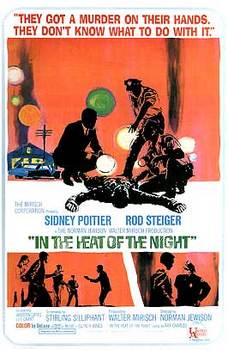
“In the Heat of the Night”, United Artists, 109 minutes, 1967
Directed by Norman Jewison
Based on the novel "In the Heat of Night" by John Ball
Starring Sidney Poitier, Rod Steiger
Here is another movie starring trains shot in the “nearly” ‘70s.
In the movie, GM&O passenger trains, MP freights and GM&O Sparta station are featured: locomotives, GM&O E7 #103, MP GP35 #615, 660 and 622, MP GP18 #457 are extracted according to Jim Tiroch of “The CineTrains Project”.
Sidney Poitier arrives in the night at the town of Sparta by GM&O train. The train might be a movie special, as I cannot find any train to come under in the 1966 Official Guide. Station building still exists and now houses an art gallery.
“The CineTrains Project” web site;
http://cinetrains.wordpress.com/2012/01/28/racism-is-not-funny-the-mopac-and-the-gmo-in-1967s-in-the-heat-of-the-night/
“In the Heat of the Night” trailer;
http://www.youtube.com/watch?v=e2XvTCkXwtA
2012-11-30 09:00
コメント(2)
Aug 2012 issue Trains [Column_Printed Matter]
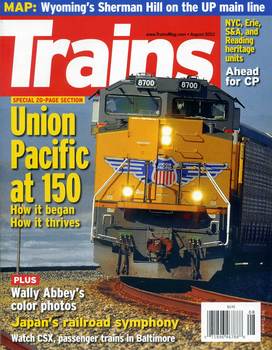
I subscribe to “printed” Trains magazine for decades.
I prefer “printed” to “digital” because it is the substance. Contrary to this substance, today’s digital data, like photos, may called as phenomenon. I think some value causes (and I know it also loses) by converting this phenomenon to the substance. Printing technique brings this value to the substance.
Needless to say the lack of black dots shown above, I feel that printing quality of recent issues is getting worse; pictures are depressed and lack depth. I don’t know whether it’s the subject of printing machine or density of ink or paper used.
Trains magazine has “Gallery” pages and holds photo contests. The magazine appreciates the value of the quality of photo. Why then reducing the quality of photo in the printed issue?
As the efficiency and settings of monitor we use are different to each other. Therefore, printed matters can only tell the exact intention of the photographer/publisher. So, I think that Kalmbach should bring back the value to “printed” Trains magazine to tell the value of the quality of photo.
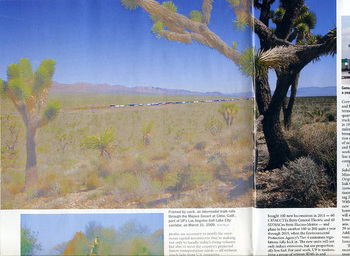 : page 30-31 of the Aug 2012 Trains
: page 30-31 of the Aug 2012 Trains : dots of successive Trains
: dots of successive Trains2012-12-07 09:00
コメント(2)
Uncommon Places by Stephen Shore [Column_Printed Matter]
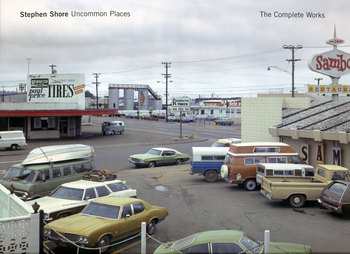 : front cover
: front cover“Uncommon Places”, by Stephen Shore, 188 pages, APERTURE, 2004
As I made a complaint to the quality of printing last week, I introduce a fine quality printing this week. I think this book would help making layouts.
This is a photographic document of the American vernacular landscape, shot in the '70s and originally printed in 1982. Stephan Shore is said to be one of the master color landscape photo artist along with William Eggleston, succeeding monochrome Robert Frank or Walker Evans.
Stephen chose conventional street scene to capture the essence of American landscape. There is no “train” captured. But I can blow up my image as if a train is there in the background.
The evidence is that there really is the Canadian Pacific track at the opposite end of the street where Stephan captured the view on the back cover of the book; Proton Ave. Gull Lake, Saskatchewan, Canada. Also is a spur at the back of "Bob's Fine Cars" in the front cover; Fifth St. and Broadway, Eureka, California.
Stephen says that landscape has the essence of the place; such as culture, economy and tradition. I think the essence landscape has is also needed to a layout. Model structure kits, figures or trees would help, but these leave something to be desired.
Stephan says that the structures are the parameters of the essence landscape has. So should be our model structures. That’s why I think this book would help making layouts.
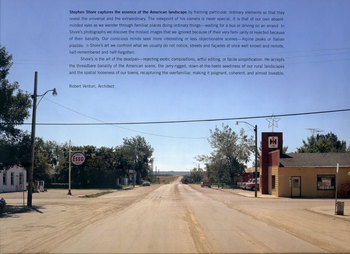 : back cover
: back cover大きな地図で見る: opposite view of the Proton Ave featured in the back cover
2012-12-14 09:00
コメント(0)
Duel by Steven Spielberg [Column_Printed Matter]
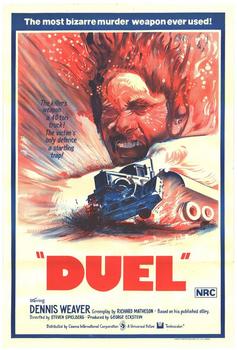
“Duel”, ABC/Universal, 74/90 minutes, 1971/1973
Directed by Steven Spielberg
Written by Richard Matheson
Starring Dennis Weaver
I'm representing movies shot in the '70s starring trains since last year. Here is another one.
In this movie, some SP freight trains over Cajon Pass are featured. According to “The CineTrains Project” web site, SP SD35 #6909 and 6907, SD39 #5321, SD9 #3954 3928 and 3958, SD40 #8485 and U30C #7931 are featured in the movie. We also can find a SP bay window caboose.
Also featured is a 1955 Peterbuilt tractor truck. The truck has added a cut of rail to its front bumper.
It is said that Spielberg expanded the truck to shark in the movie “Jaws”. By then, I wonder what would he expand the train to.
“The CineTrains Project” web site;
http://cinetrains.wordpress.com/2012/01/31/cars-trucks-and-trains-southern-pacific-in-spielbergs-duel/
“Duel” trailer;
http://www.youtube.com/watch?v=5MtAMc4i8OA
2013-01-11 09:00
コメント(0)
VANISHING POINT by Richard Sarafian 2 - Direct Angle Shot [Column_Printed Matter]
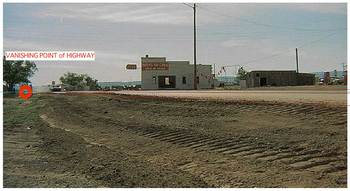 : sole visual vanishing point in the movie “Vanishing Point”
: sole visual vanishing point in the movie “Vanishing Point”I owe much to the movie “Vanishing Point” in modeling the town of Cisco. When I was drawing structure elevations, I noticed that the camera of this movie faces the structures directly. As a result, structures appear as elevation drawings in this movie. Thus, I used the screen shot of the movie to draw elevations.
In general, 3D shape, like architecture, is shot obliquely to capture its solidity. Solidity brings a sense of stability to the screen or picture. Contrary to this general method, “Vanishing Point” cameraman John A. Alonzo shot the structures not obliquely but directly at Cisco.
If the structures appear in the movie were the settings without depth, it isn’t strange cameraman shoot so. But, in this movie, the structures were not settings but real architectures. Then, why John shot like that?
The structures at Cisco are facing directly to the north, thus obliquely against the road. Accordingly, if one choose the general method, there would be plural visual vanishing points: one on the road, and the other somewhere in the terrain, like David’s photo shown below.
As shown as the title of the movie, visual vanishing point is placed as the main subject of the movie. Plural visual vanishing points in the screen weakens the subject and the visual impact of this movie because they bring sense of stability. Sense of stability is not needed here.
Also, is that the visual vanishing point should exist on the road since this is a road movie.
If one shoot the structures at Cisco directly, there would be sole visual vanishing point: one on the road, but the outlines of the structures don't create any vanishing points.
Thus, I think John chose the unusual sole vanishing point angle to shoot the town of Cisco.
“Vanishing Point” screen capture quoted from;
photo of the structure in Cisco by David quoted from;
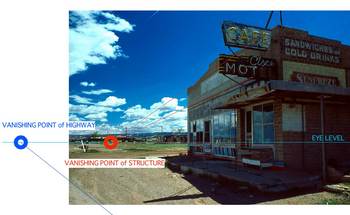 : plural visual vanishing points in David’s photo
: plural visual vanishing points in David’s photo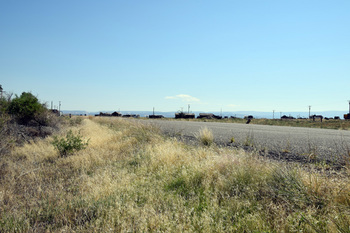 : Cisco, UT. Sep. 11, 2014
: Cisco, UT. Sep. 11, 20142013-12-13 09:00
コメント(0)



